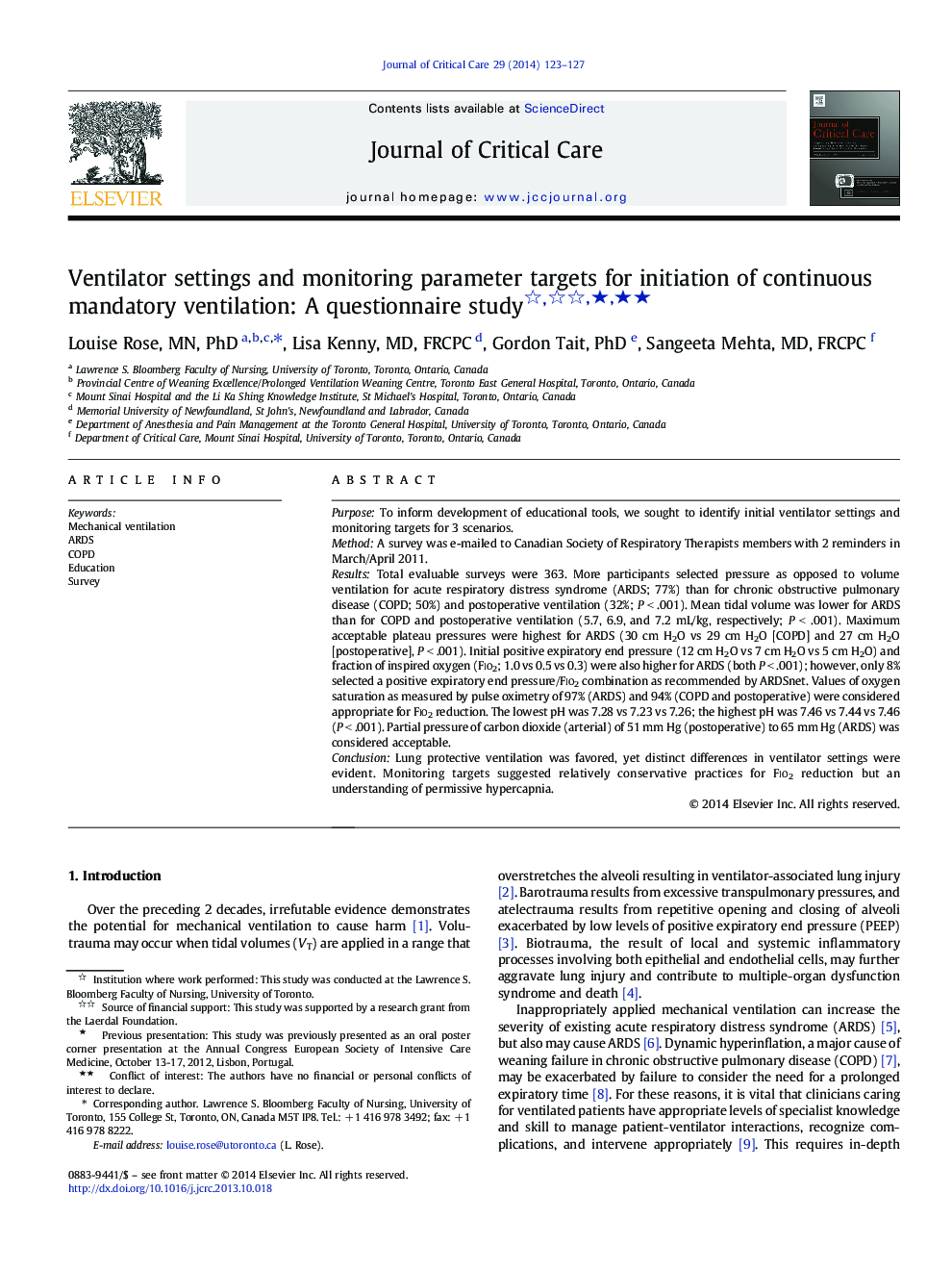| کد مقاله | کد نشریه | سال انتشار | مقاله انگلیسی | نسخه تمام متن |
|---|---|---|---|---|
| 2764666 | 1150934 | 2014 | 5 صفحه PDF | دانلود رایگان |
PurposeTo inform development of educational tools, we sought to identify initial ventilator settings and monitoring targets for 3 scenarios.MethodA survey was e-mailed to Canadian Society of Respiratory Therapists members with 2 reminders in March/April 2011.ResultsTotal evaluable surveys were 363. More participants selected pressure as opposed to volume ventilation for acute respiratory distress syndrome (ARDS; 77%) than for chronic obstructive pulmonary disease (COPD; 50%) and postoperative ventilation (32%; P < .001). Mean tidal volume was lower for ARDS than for COPD and postoperative ventilation (5.7, 6.9, and 7.2 mL/kg, respectively; P < .001). Maximum acceptable plateau pressures were highest for ARDS (30 cm H2O vs 29 cm H2O [COPD] and 27 cm H2O [postoperative], P < .001). Initial positive expiratory end pressure (12 cm H2O vs 7 cm H2O vs 5 cm H2O) and fraction of inspired oxygen (Fio2; 1.0 vs 0.5 vs 0.3) were also higher for ARDS (both P < .001); however, only 8% selected a positive expiratory end pressure/Fio2 combination as recommended by ARDSnet. Values of oxygen saturation as measured by pulse oximetry of 97% (ARDS) and 94% (COPD and postoperative) were considered appropriate for Fio2 reduction. The lowest pH was 7.28 vs 7.23 vs 7.26; the highest pH was 7.46 vs 7.44 vs 7.46 (P < .001). Partial pressure of carbon dioxide (arterial) of 51 mm Hg (postoperative) to 65 mm Hg (ARDS) was considered acceptable.ConclusionLung protective ventilation was favored, yet distinct differences in ventilator settings were evident. Monitoring targets suggested relatively conservative practices for Fio2 reduction but an understanding of permissive hypercapnia.
Journal: Journal of Critical Care - Volume 29, Issue 1, February 2014, Pages 123–127
